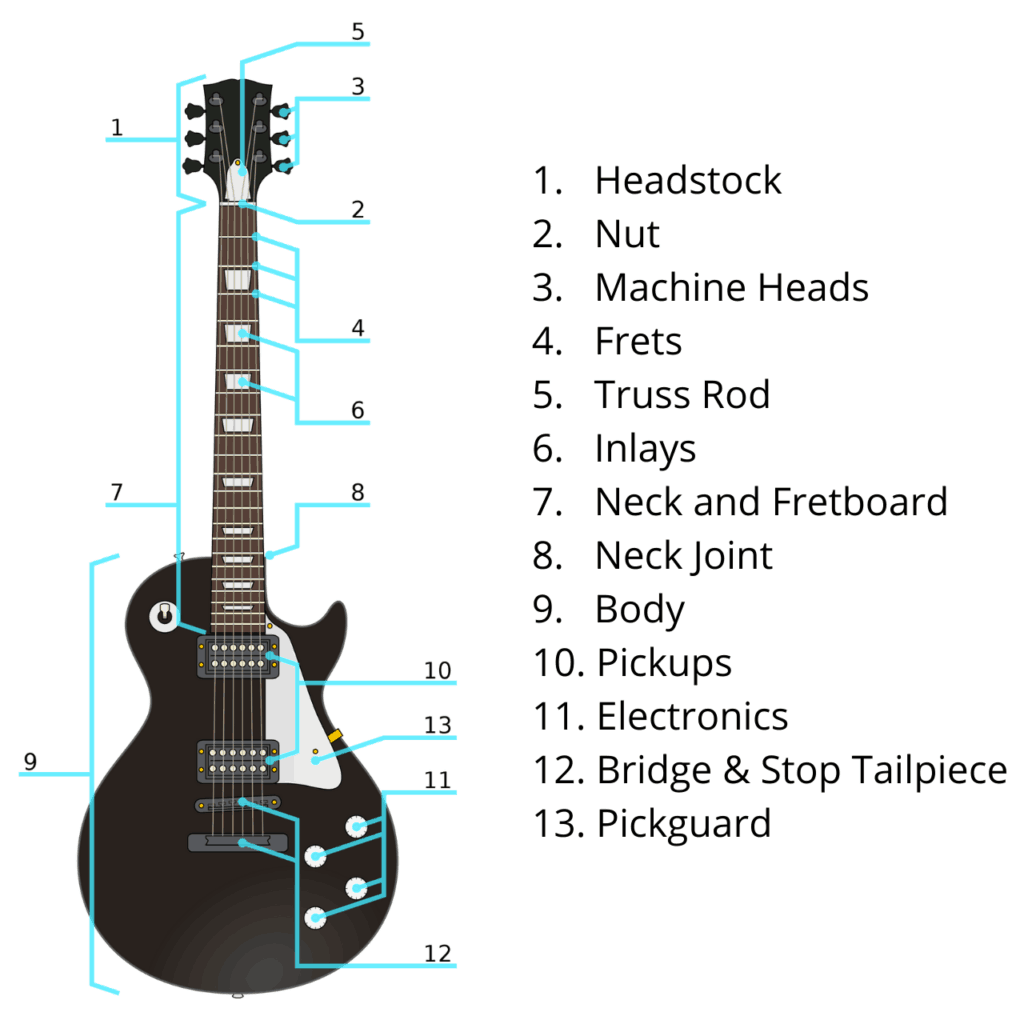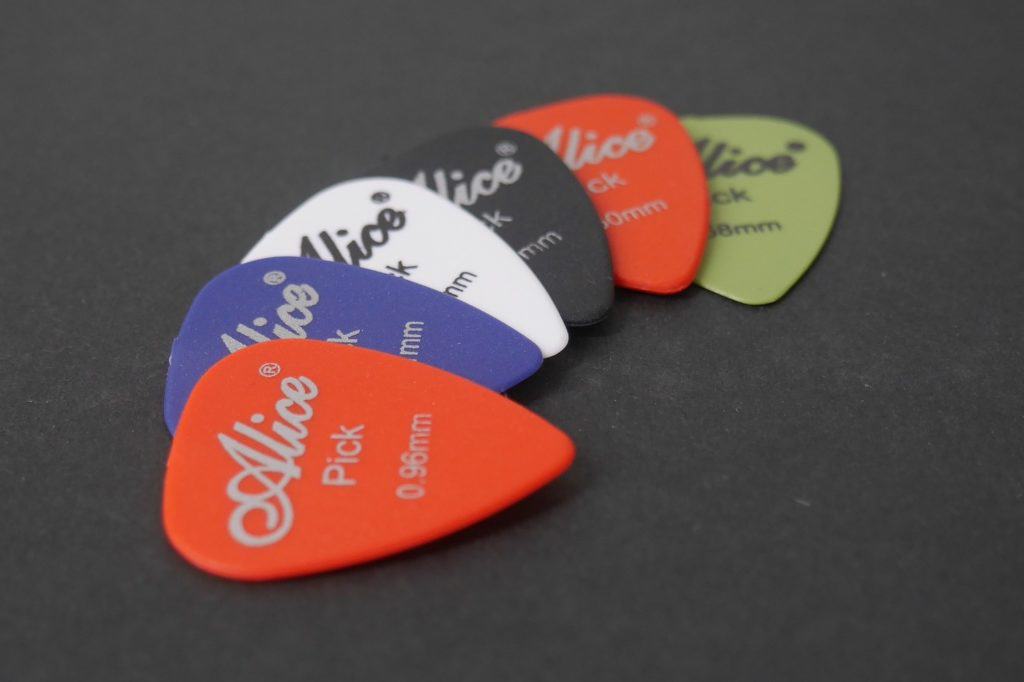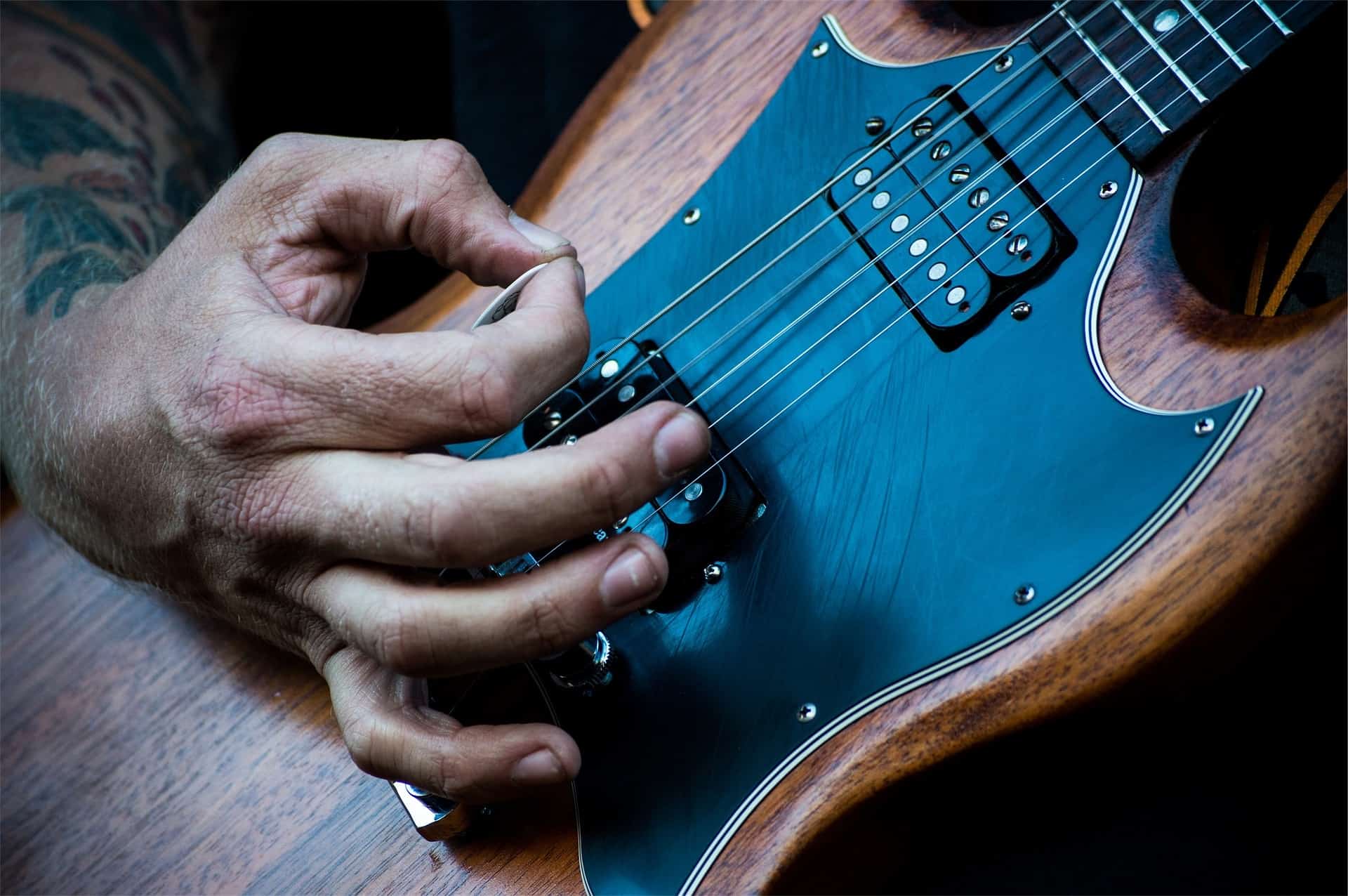Are you comfortable with acoustic guitars, but want to jump to the next level? Perhaps you’re starting your journey with a Strat on your back and the amp on your hand? Either way, you’ve come to the right place! In this article, you will learn the things you need to have in mind to start learning to play electric guitar, along with some great resources to start playing today!
Know your guitar

The first and foremost thing you need to do before playing is understanding what you have in your hands. If you’re familiar with acoustic guitars, you’ll notice that electric guitars are very different. They tend to be flatter, come in various, sometimes wild shapes and colors, and have a distinctive sound. Let’s quickly review the elements that make electric guitars stand out from their acoustic counterparts.
The pickups
The main element that sets apart acoustic and electric guitar is that instead of having a hollow body that acts as a resonance box, electric guitars have these inducting sensors called pickups. These magnetize the strings and create a magnetic field that is disturbed by the vibrations of the strings. The coil then converts this disturbance in the pickup to electric signals that become amplified. That’s what we hear coming out through the amp. Without these or the amp itself, the guitar barely makes a sound. Try it yourself.
The jack
It’s the output plug of the pickups and, with the help of a cable, connects these with the amplifier. It’s the second most noticeable feature that distinguishes electric and acoustic guitars since the latter doesn’t need any.
The volume controls
Unlike acoustic guitars in which you can only adjust your volume by toning up or down your picking or strumming strength, you can modify the output in your amp by using the volume dials in your guitar.
The amplifier
Acoustic guitars can be played to a decent volume, but if you want to make your guitar roar and be heard by the crowd, that’s what the amp is for. The amplifier is an important piece beyond being able to hear your guitar. Even perfect technique and excellent pedals can be overshadowed by a low-quality amp.
The pedals
Pedals are special devices that are connected between your guitar and the amplifier, and they can distort the sound of your guitar in various ways. The thing about them is that you can control the input of said distortion with your feet by pressing on it. This can be advantageous to ‘spice up’ some chords or riffs in the songs you play. Use the pedals sparingly, though. It’s best to go easy on the distortions or not to use any when practicing so that you can hear everything you’re doing with clarity.
The tremolo bar
Also called the ‘whammy bar’, the tremolo bar is connected to the bridge of the guitar. When pressed, it will bend the strings creating a fluctuating sound, similar to bending the strings themselves in the fretboard but in a more precise, solid way.
Now that we know what makes an electric guitar, so let’s continue with some sound advice on how to learn to play an electric guitar.
Safety first!
- Make sure you play with clean, dry hands. This advice is not for the reason you might be thinking, though. You won’t electrocute yourself if you do. As a matter of fact, your guitar’s wiring has to be seriously damaged for you having a slight chance of getting any zap from it. What can happen if you do play with wet hands, though, is that your strings will rust and fatigue faster; and your fingers will be more prone to blisters and soreness.
- Concerning your wiring, make sure it’s in good condition and that everything is plugged properly.
- Contrary to popular belief, having an altered state of consciousness will not enhance your playing. Alcohol/drugs and accuracy don’t mix well. Best be sober to practice or to play your best.
Use a pick

Messing around with a guitar barehanded can be fun, and strumming without any aides is completely doable. Still, a pick will enhance the tone of your guitar and allow you to do various techniques like shredding, playing isolate strings, and strumming effects! Picks with different thicknesses will affect the outcome greatly in your amp. As many experienced guitarists say, the tone is in your fingers and pick, not in the pedals.
Also, how you hold it is very important. There are many ways to hold the pick. The basic hold involves your thumb and index finger, in a way that the tip of the pick is available to touch the strings. When held correctly, you won’t feel unnecessary tension in your wrist and palm, and you’ll be able with time and practice to free the rest of your fingers to be able to play more strings with them, by picking, tapping and slapping.
Get used to chords first
There are two points in getting used to the basic chords before trying more advanced techniques. The chords give you a general sense of where every note is located in the fretboard and teach you how melody relates to harmony in music. Also, getting used to the natural, comfortable finger positions that chords provide, will set a solid foundation for practicing instant recall of notes and soloing with pentatonic and jazz scales because you will have the next note at the ready, whichever it might be. Instead of having to fiddle back and forth with one or two fingers in a couple of strings, you can use the entirety of strings and fingers to reach notes and play better melodies more efficiently.
Learn your way around the fretboard.
Once you get your chords right, you’ll be able to explore the notes on the fretboard with ease, allowing you to get more comfortable with lead guitar parts and improvisation. More about learning the fretboard here.
Practice, practice, practice!
To reach the stars, you need to put in the effort. You need to set time to practice, as little as 10 minutes a day to start, and you’ll start seeing results. For incredibly helpful tutorials and exercises, we recommend Guitar Tricks! This program contains over 11.000 guitar lessons with high-quality video content, easily accessible through any platform! It counts with 45 instructors, step-by-step instructions for beginners, over 1000 songs explained in the styles of all-time bands like Led Zeppelin, AC/DC, and many more, and an exclusive printable e-book containing all the tabs and sheet music from the program!



